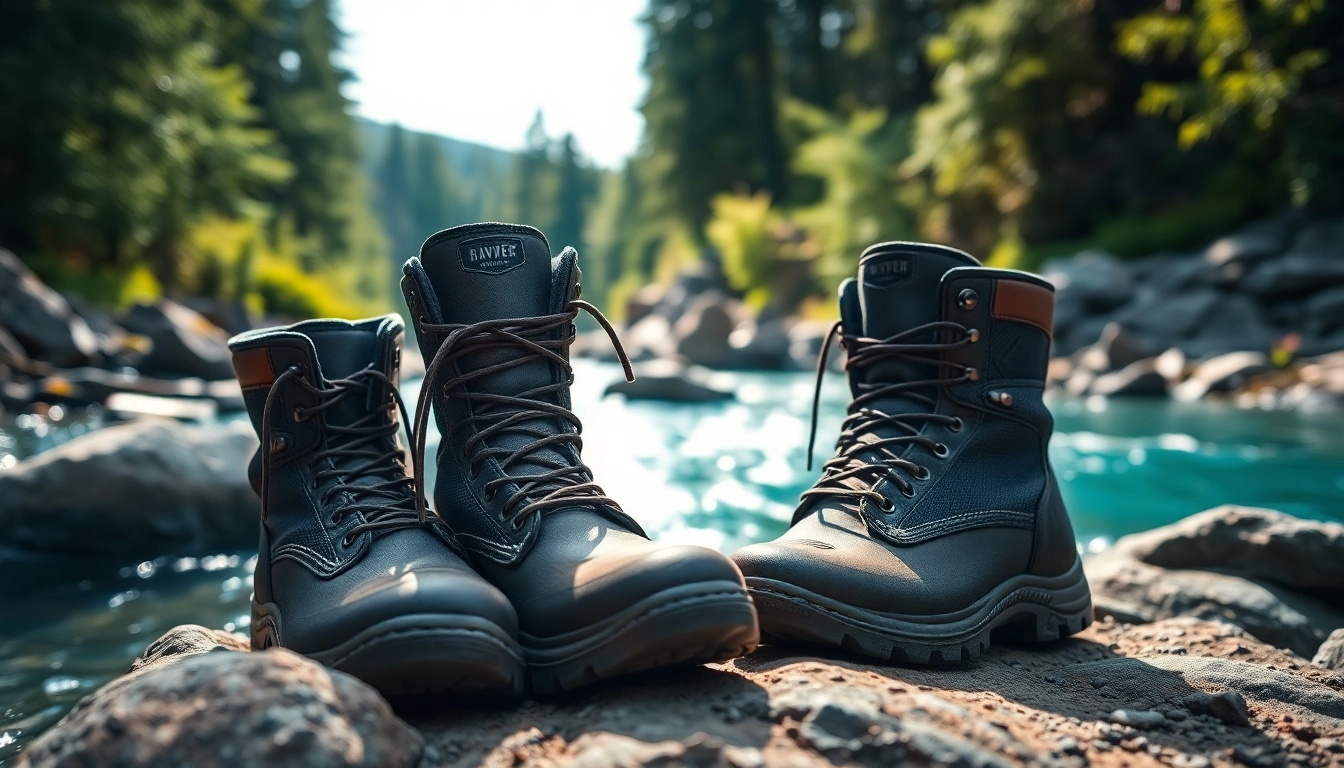When venturing into the world of fly fishing, one of the most crucial pieces of gear is often overlooked: your choice of boots. Fly fishing boots serve as a vital link between you and the water, providing not only comfort and protection but also ensuring that you navigate challenging terrains safely and effectively. As you consider upgrading your gear, explore the various facets of Fly fishing boots that can make your experience much more enjoyable.
Understanding Fly Fishing Boots: Key Features and Benefits
Materials That Matter for Performance
Choosing the right materials for your fly fishing boots can significantly impact performance. Common materials include synthetic fabrics like nylon and polyester, often combined with rubber and EVA (ethylene-vinyl acetate) for additional support and durability. These materials provide various benefits:
- Durability: Synthetic materials are known for their resilience against abrasions and the demands of aquatic environments.
- Waterproofing: Many high-quality boots are designed with waterproof membranes, ensuring that your feet stay dry no matter how wet your surroundings become.
- Breathability: Optimal ventilation is crucial for maintaining comfort. Look for boots featuring mesh panels that allow moisture to escape while preventing water ingress.
Comfort and Fit: The Importance of Sizing
Comfort should always be a priority when selecting fly fishing boots. Proper sizing not only contributes to comfort but also enhances your performance while wading. Here are a few key factors to consider:
- Try them on: Always try on boots before purchasing, if possible. A proper fit will ensure comfort during prolonged wear.
- Consider layering: If you plan to wear thick socks or neoprene waders with your boots, make sure to account for this when choosing your size.
- Flexibility: Choose boots with enough flexibility to provide comfort while still supporting your foot and ankle.
Drainage and Quick-Drying: Essential for Anglers
Being in and out of water requires footwear that promotes efficient drainage. Look for fly fishing boots that feature drainage ports allowing water to escape quickly. Quick-drying materials also help prevent discomfort during shifts from wet to dry environments. This contributes not only to comfort but also to the longevity of your boots by reducing the chances of mold and mildew growth.
Types of Fly Fishing Boots: Choosing the Right Style
Wading Boots vs. Hiking Boots: Which to Select?
Understanding the difference between wading boots and hiking boots is critical when selecting the right footwear for fly fishing:
- Wading Boots: Specifically designed for use in the water, these boots typically feature felt or rubber soles, providing enhanced traction on slippery surfaces. They are built to be lightweight and often have pull tabs for easy wearing.
- Hiking Boots: While these can be used in fishing scenarios, they often lack the specialized features found in wading boots, such as drainage ports or soles designed for slick surfaces.
Waterproof vs. Water-Resistant: What’s Best?
Waterproof boots are designed to keep water out completely and are ideal for environments where you might be fully submerged. Water-resistant boots, however, may withstand splashes and brief encounters with water but are not suited for prolonged exposure. Choosing between the two largely depends on the expected conditions during your fishing excursions.
Footwear for Different Environments: Freshwater vs. Saltwater
Another important factor is the type of water you’ll be fishing in. Freshwater environments may require different features compared to saltwater locations:
- Freshwater Boots: These boots can be designed with felt soles for optimal traction on slippery rocks and river beds.
- Saltwater Boots: Look for materials that resist corrosion from saltwater, and consider rubber soles for additional grip on slick surfaces.
Top Features to Look for in Fly Fishing Boots
Support and Stability: Navigating Uneven Terrain
Support and stability in fly fishing boots are essential for safely walking on rocky riverbeds. Boots equipped with ankle support can significantly reduce the risk of injuries, particularly in uneven terrains. Look for designs that utilize ankle height and supportive uppers.
Traction and Grip: Staying Safe on Slick Surfaces
The grip of your fly fishing boots can be the difference between a successful day on the water and an unintended slip. High-quality, textured soles can provide better traction. When selecting boots, consider the following:
- Material: Felt soles offer the best grip in freshwater environments, while rubber soles may provide versatility across different types of terrain.
- Tread Patterns: Boots with deep lugs or aggressive tread patterns can help enhance grip on slick surfaces.
Weight and Portability: Balancing Comfort and Functionality
When it comes to fly fishing, lightweight boots can contribute to your overall comfort as they reduce fatigue during long hours in the water. However, ensure that the lightweight option does not compromise on support, durability, or traction.
Care and Maintenance of Fly Fishing Boots
Cleaning Techniques to Extend Lifespan
Proper cleaning extends the lifespan of your fly fishing boots. After each fishing trip, rinse your boots with fresh water to remove sand, mud, and debris. One way to deep clean is to use a soft brush and mild soap, ensuring the cleaning solution does not harm the materials. Additionally, air drying them away from direct sunlight can preserve their structural integrity.
Storage Tips for Seasonal Use
When storing fly fishing boots during off-seasons, ensure they are cleaned and completely dried. Store them in a cool, dry place to prevent mold and degradation. Using a boot tree or stuffing them with newspaper can help maintain their shape.
Repairing Minor Damages: DIY Solutions
Minor damages, such as scratches or loose seams, can often be repaired at home. Use specialized waterproof tape to cover small abrasions and seal seams. For more significant damages, consider a professional repair service to ensure your boots remain functional and safe.
Frequently Asked Questions about Fly Fishing Boots
How to Choose the Right Size for Optimal Comfort?
Selecting the right size for your fly fishing boots is crucial. Try on different sizes while wearing your usual socks to find the optimal fit. Ensure that your toes have room to move without being cramped, and check that the heel is snug without sliding.
What Are the Best Practices for Wading Safely?
Always assess water conditions before wading, wearing boots with appropriate soles for the environment. Take your time as you navigate rocky surfaces, and consider utilizing a wading staff for added stability and balance.
When to Replace Your Fly Fishing Boots?
Consider replacing your fly fishing boots when you start to notice deteriorating materials, significant damage, or reduced performance in traction and comfort. Regularly inspecting your boots is vital to ensuring safety and enhancing your fishing experience.






